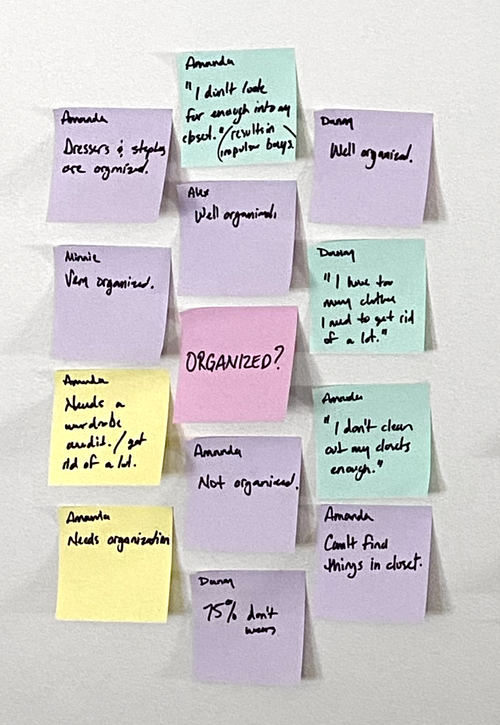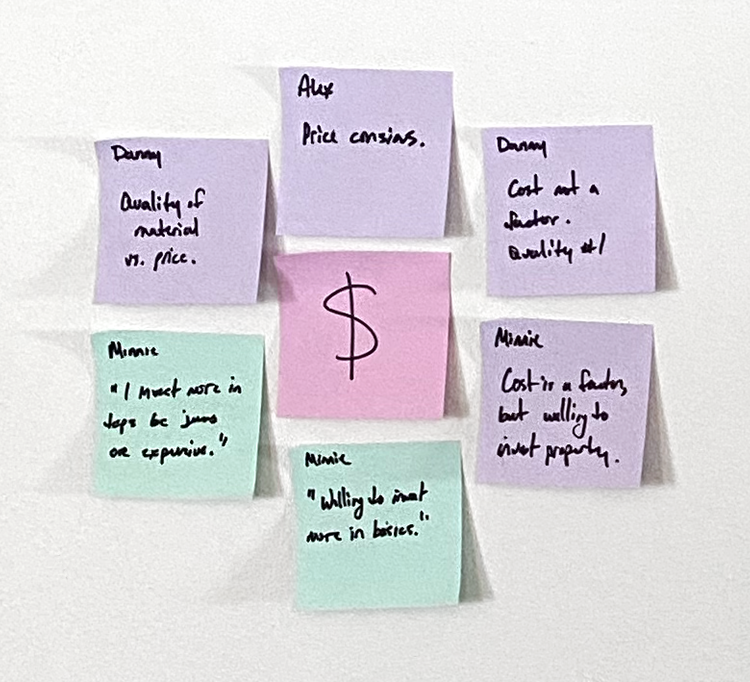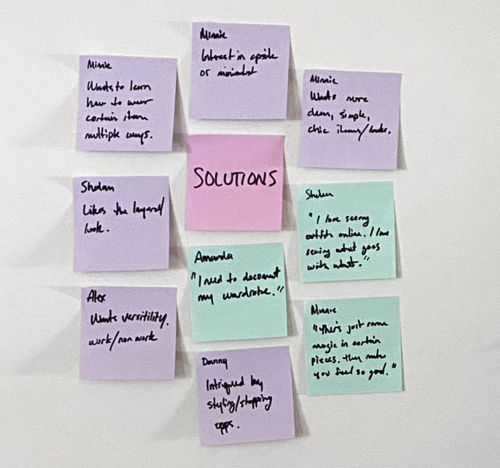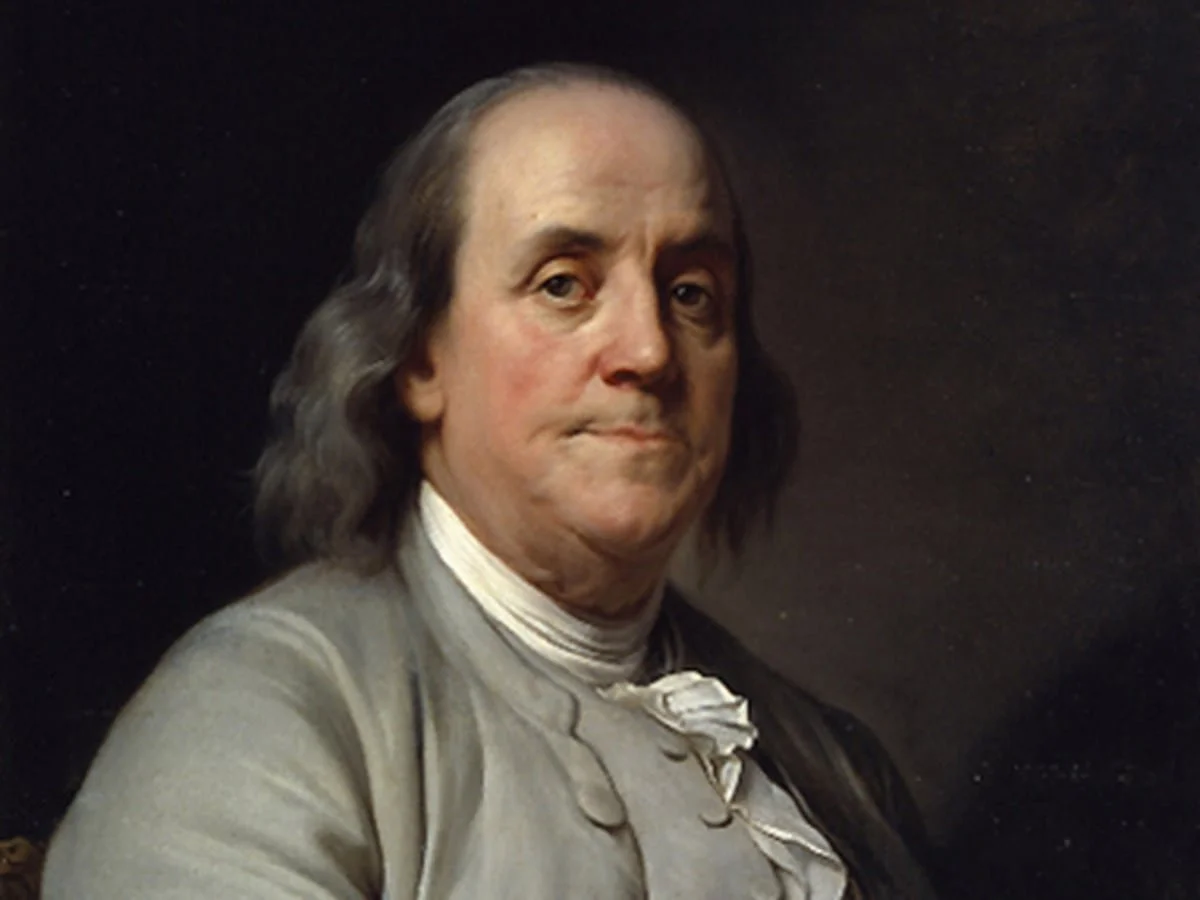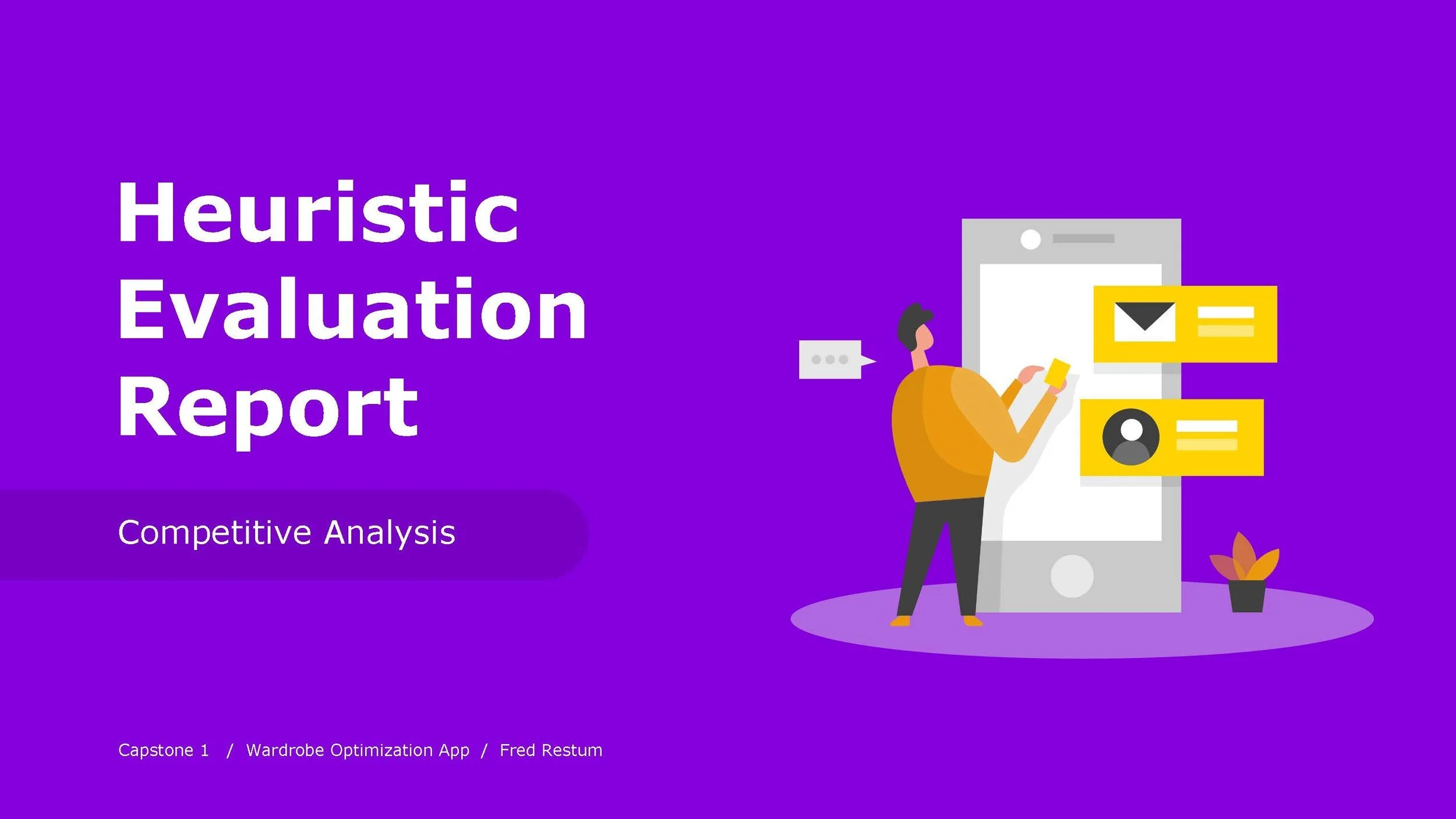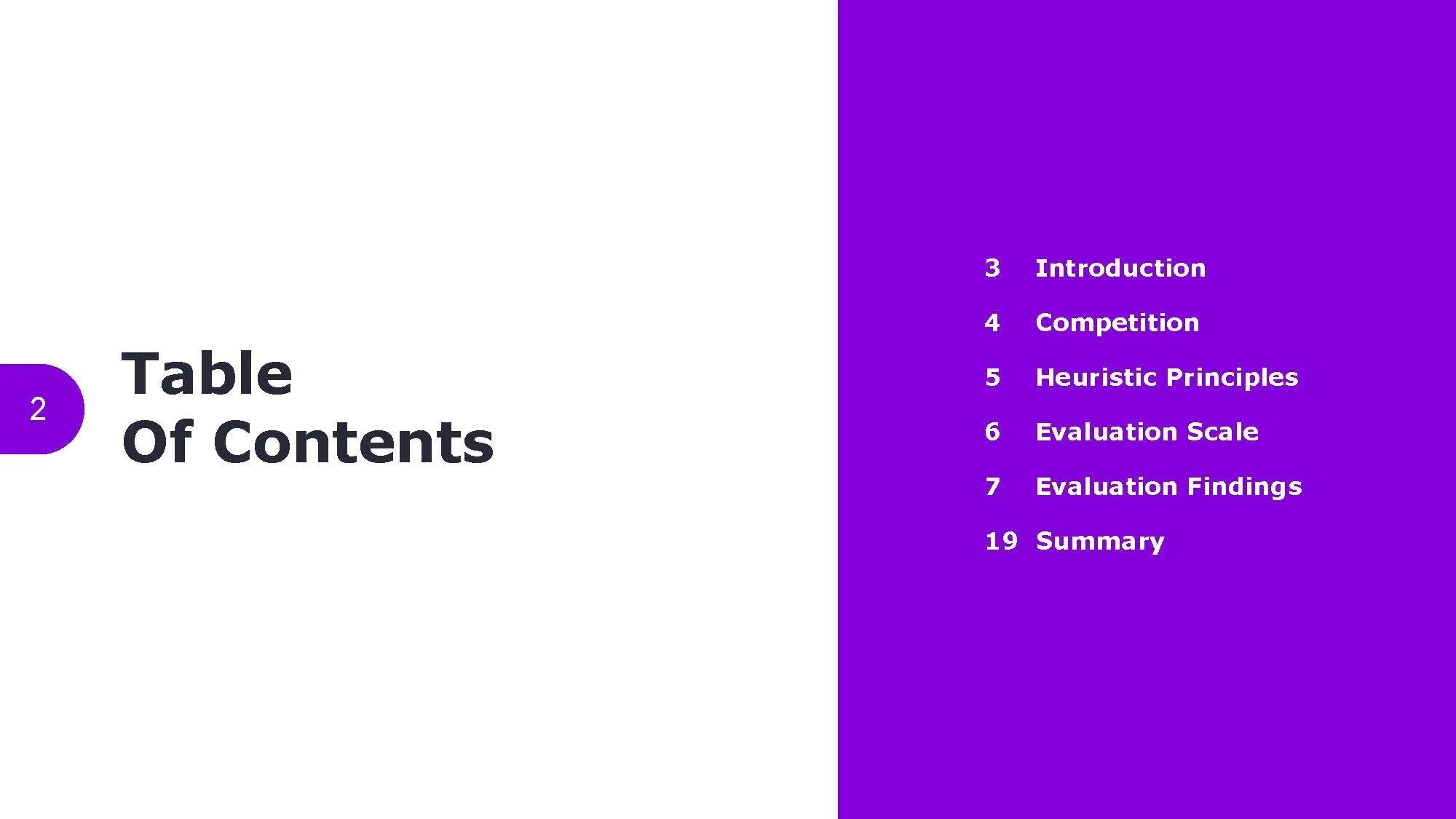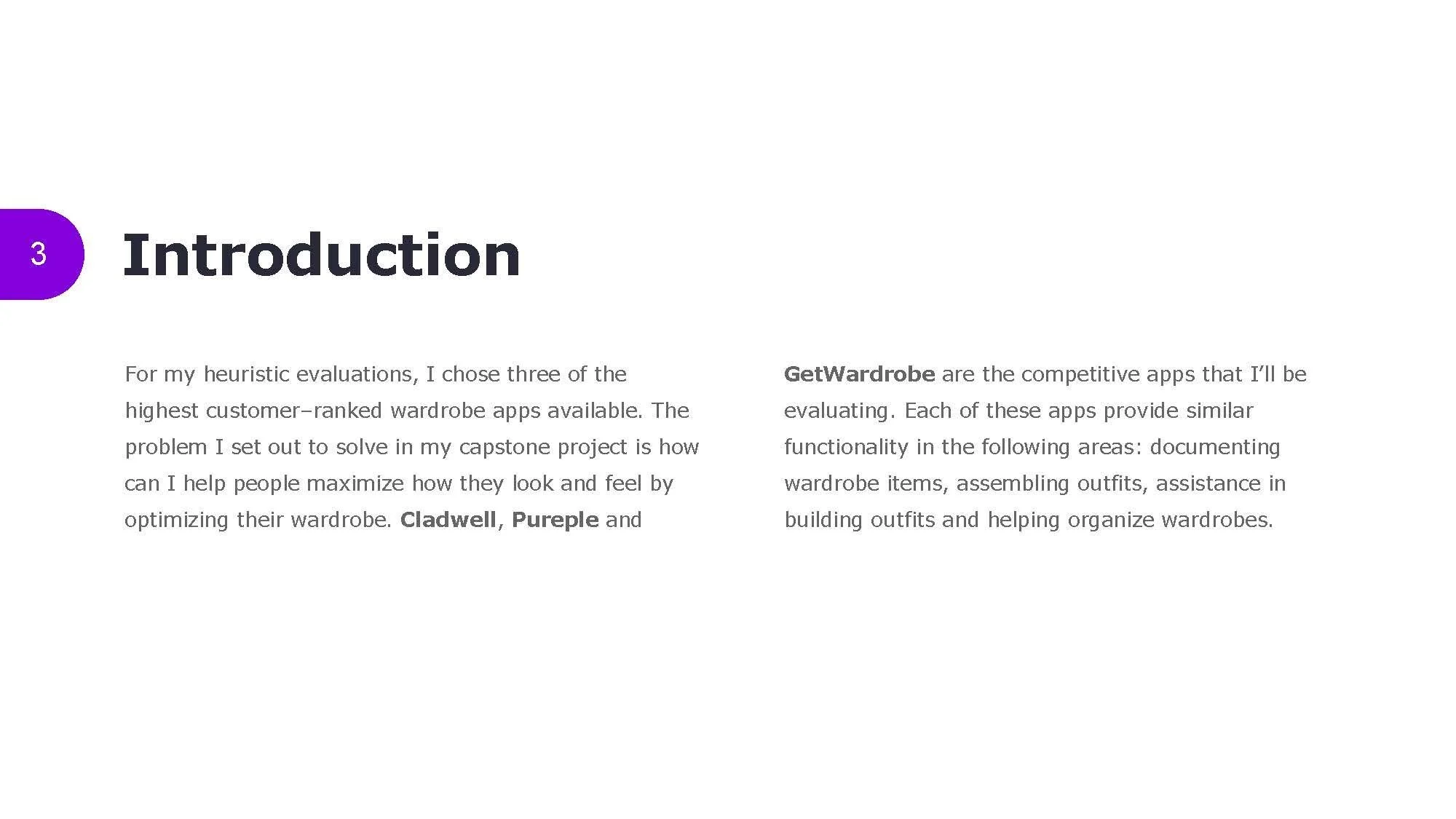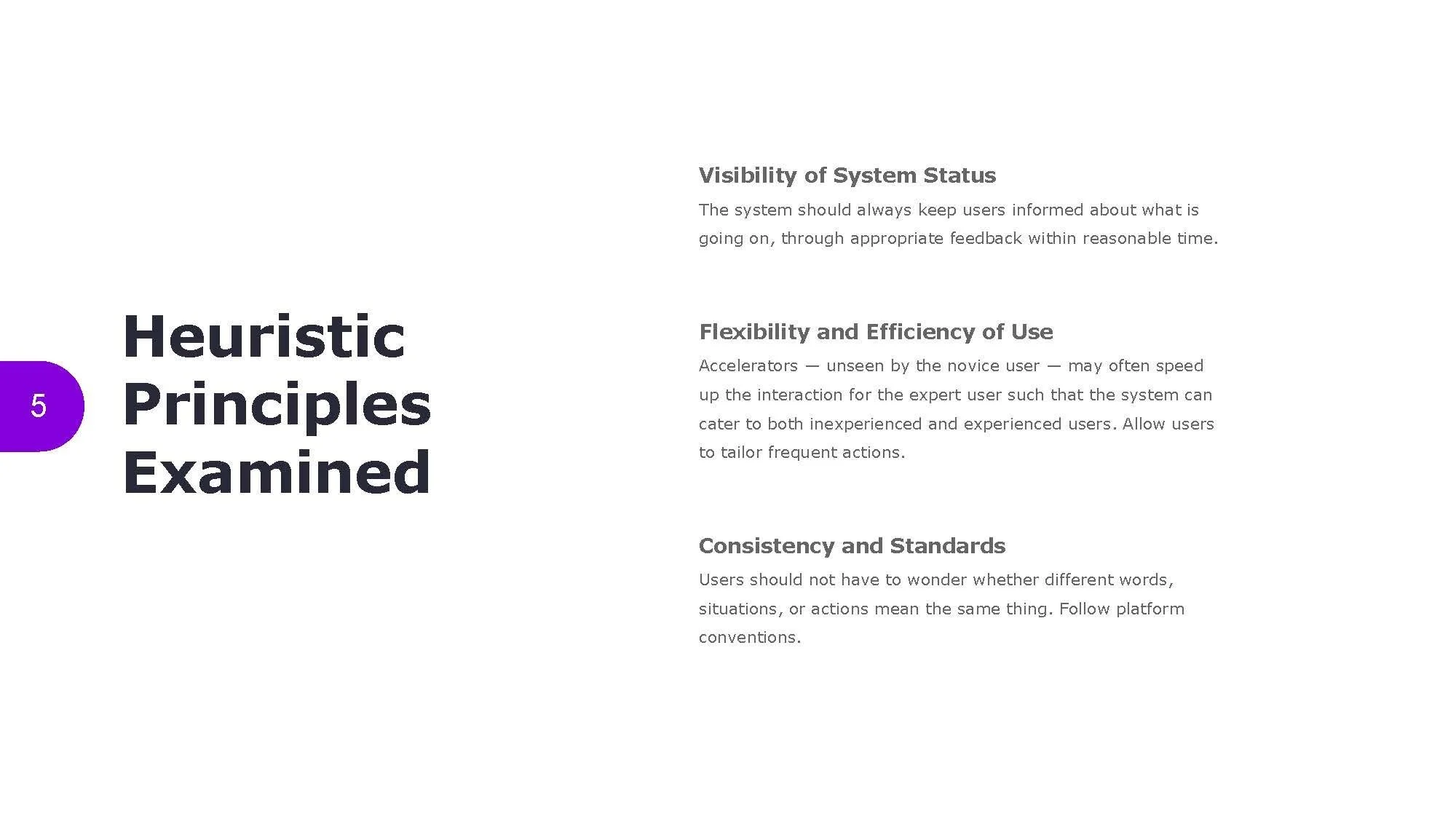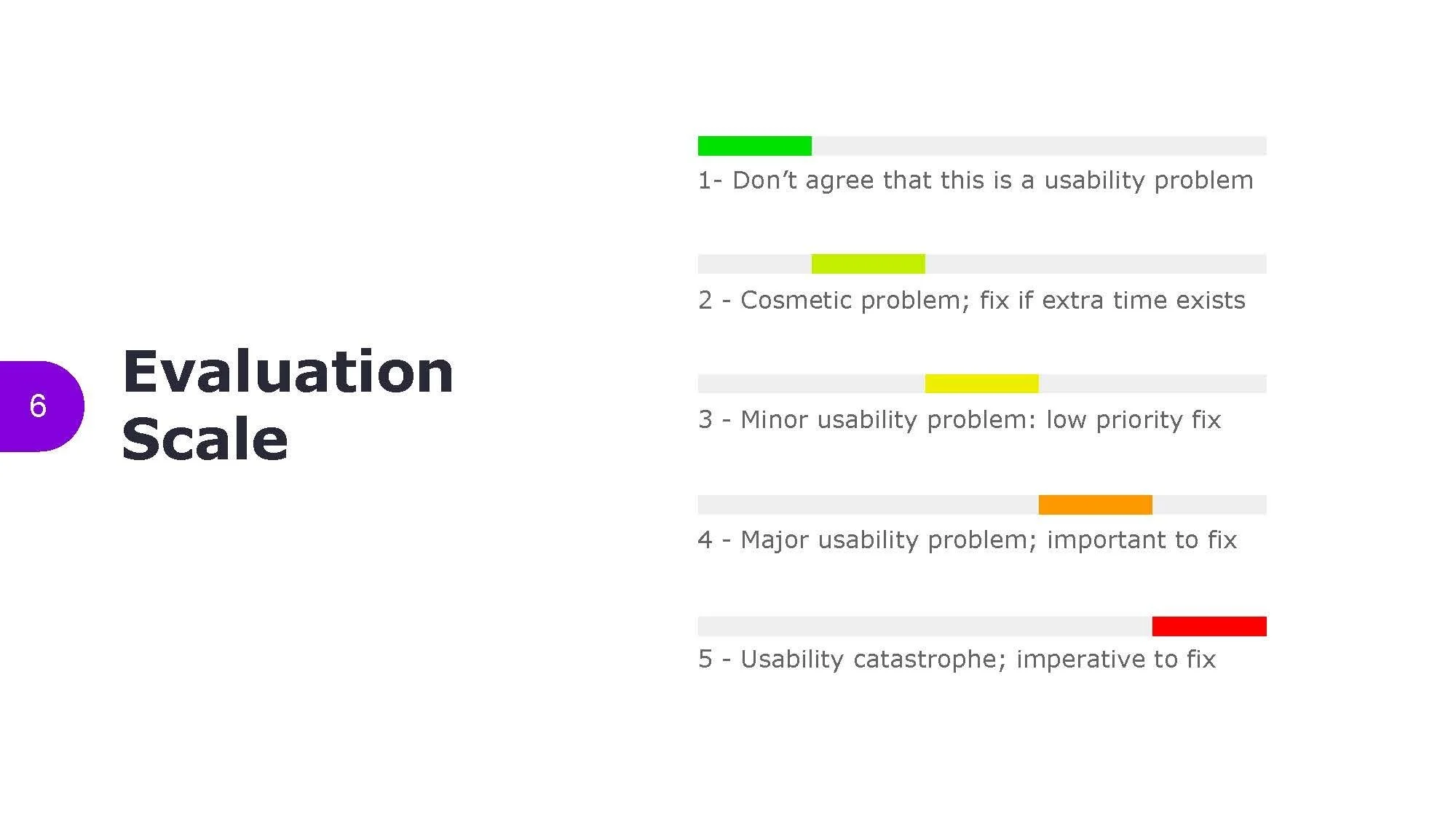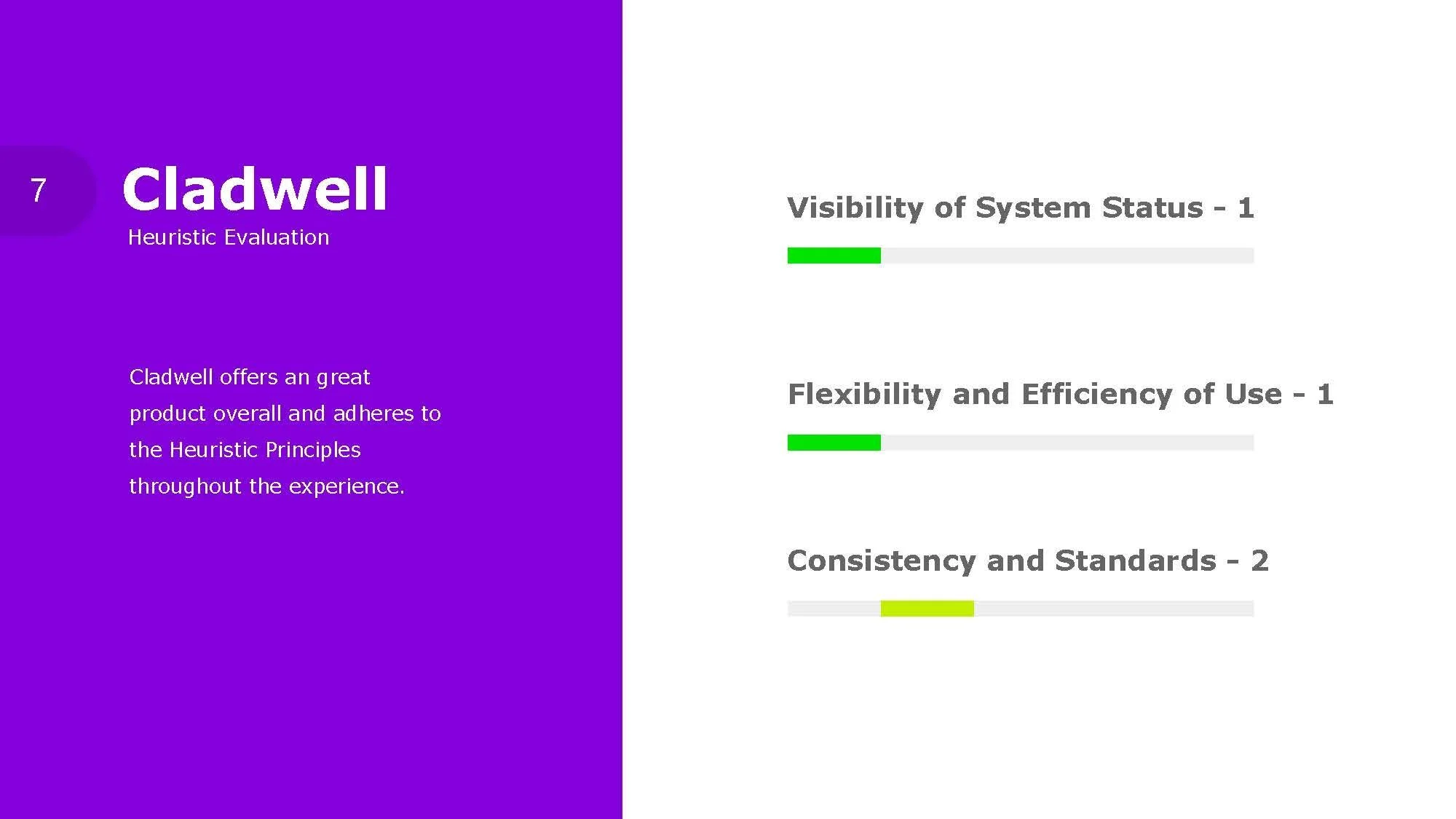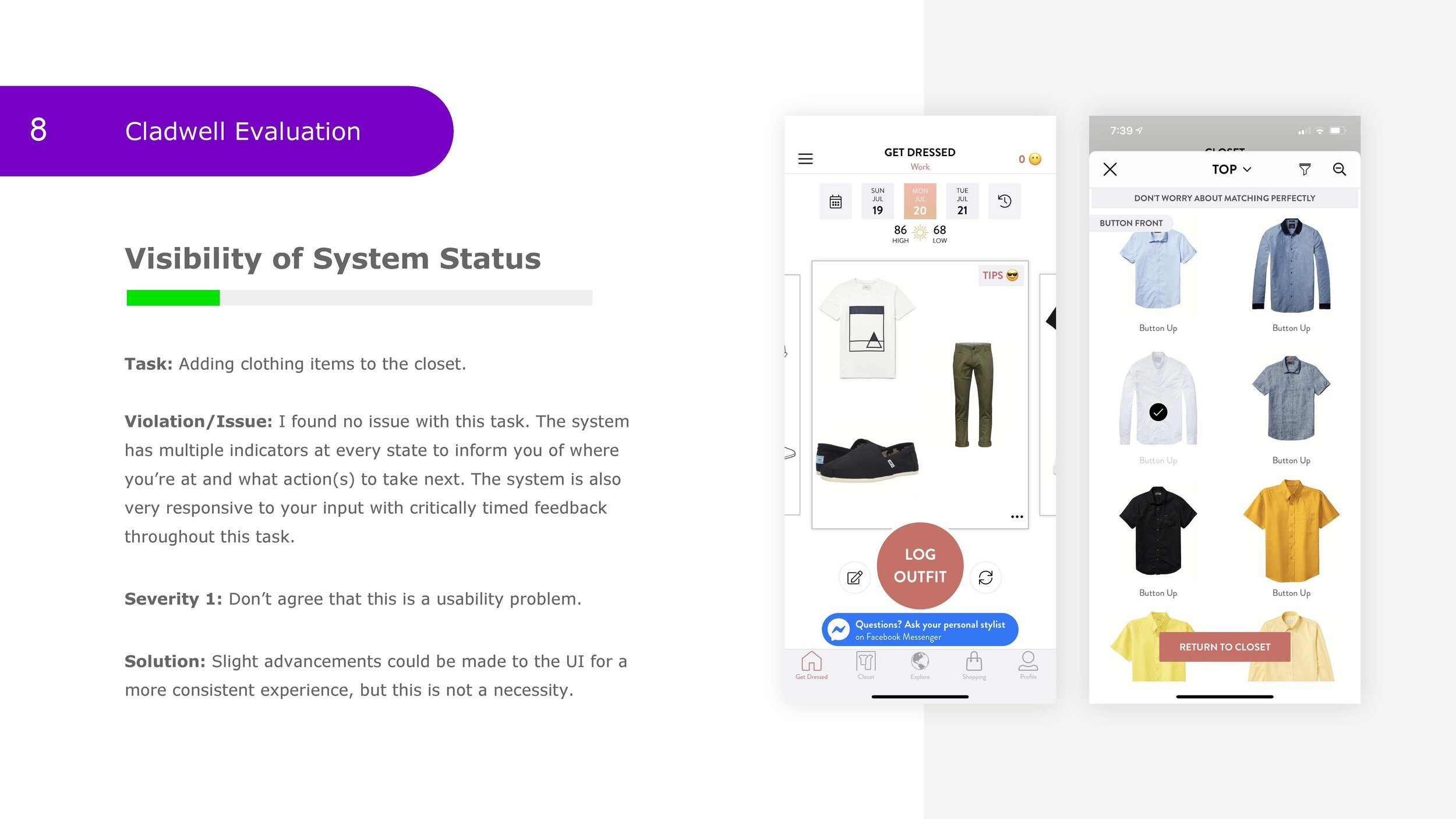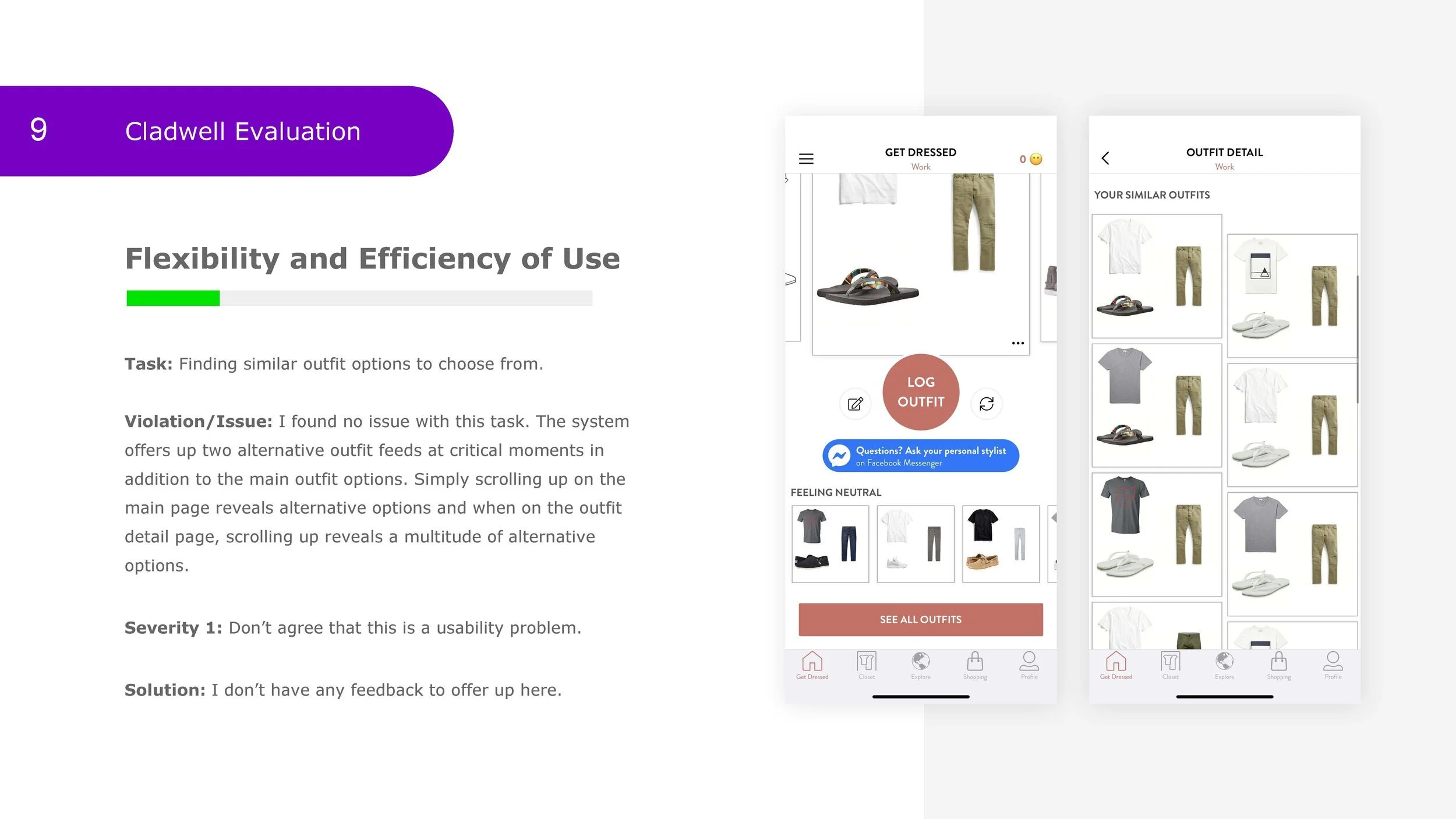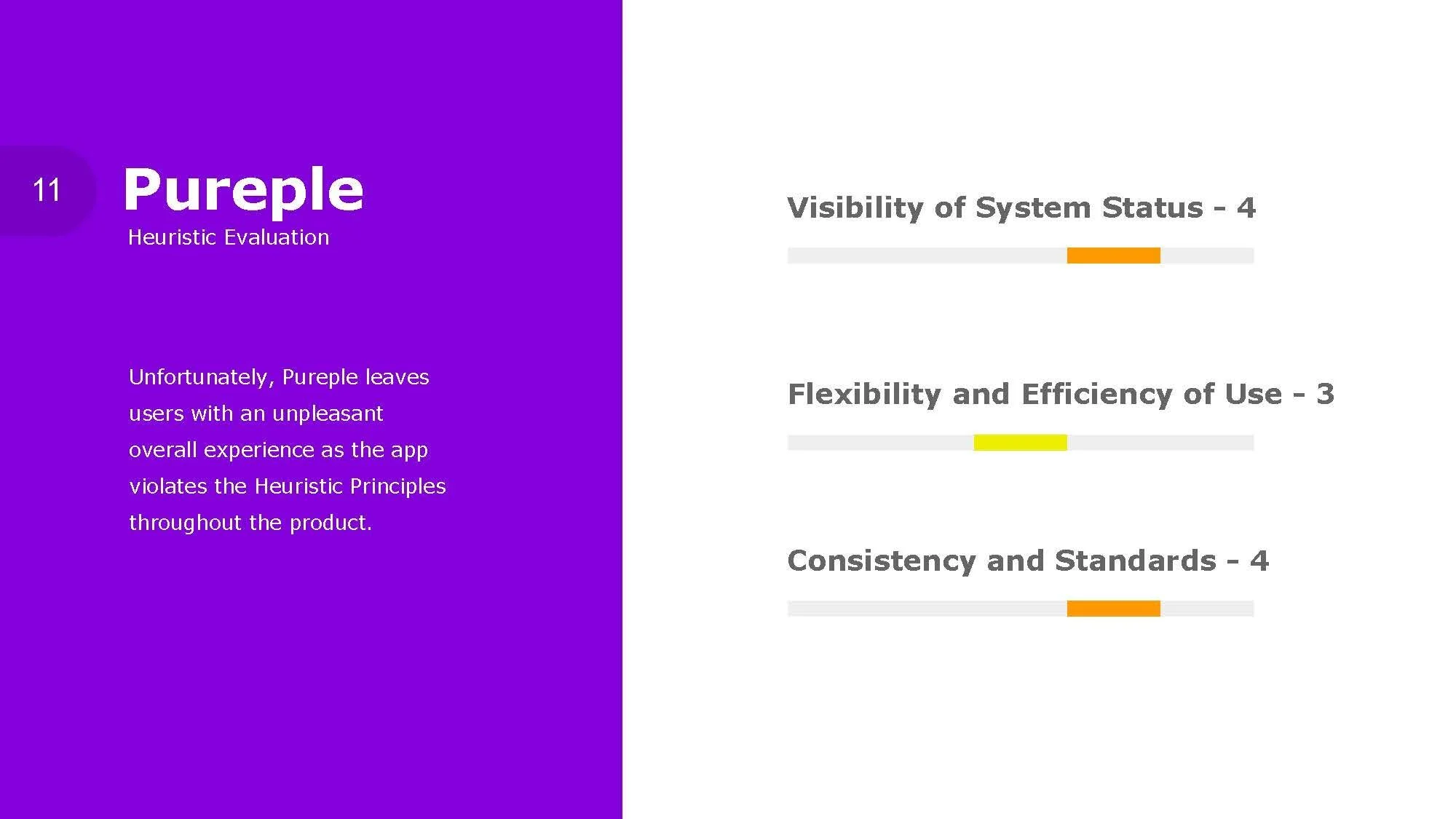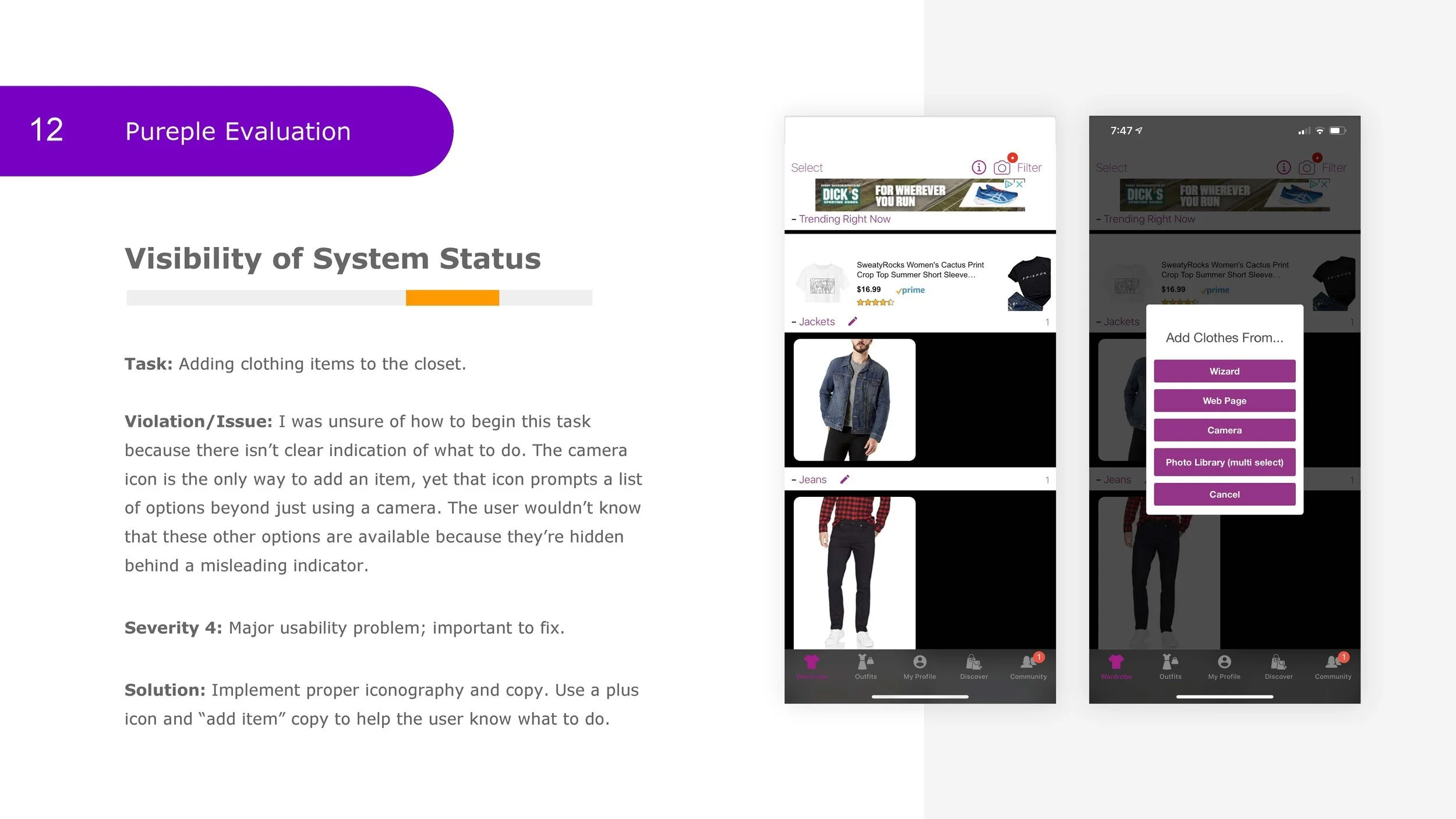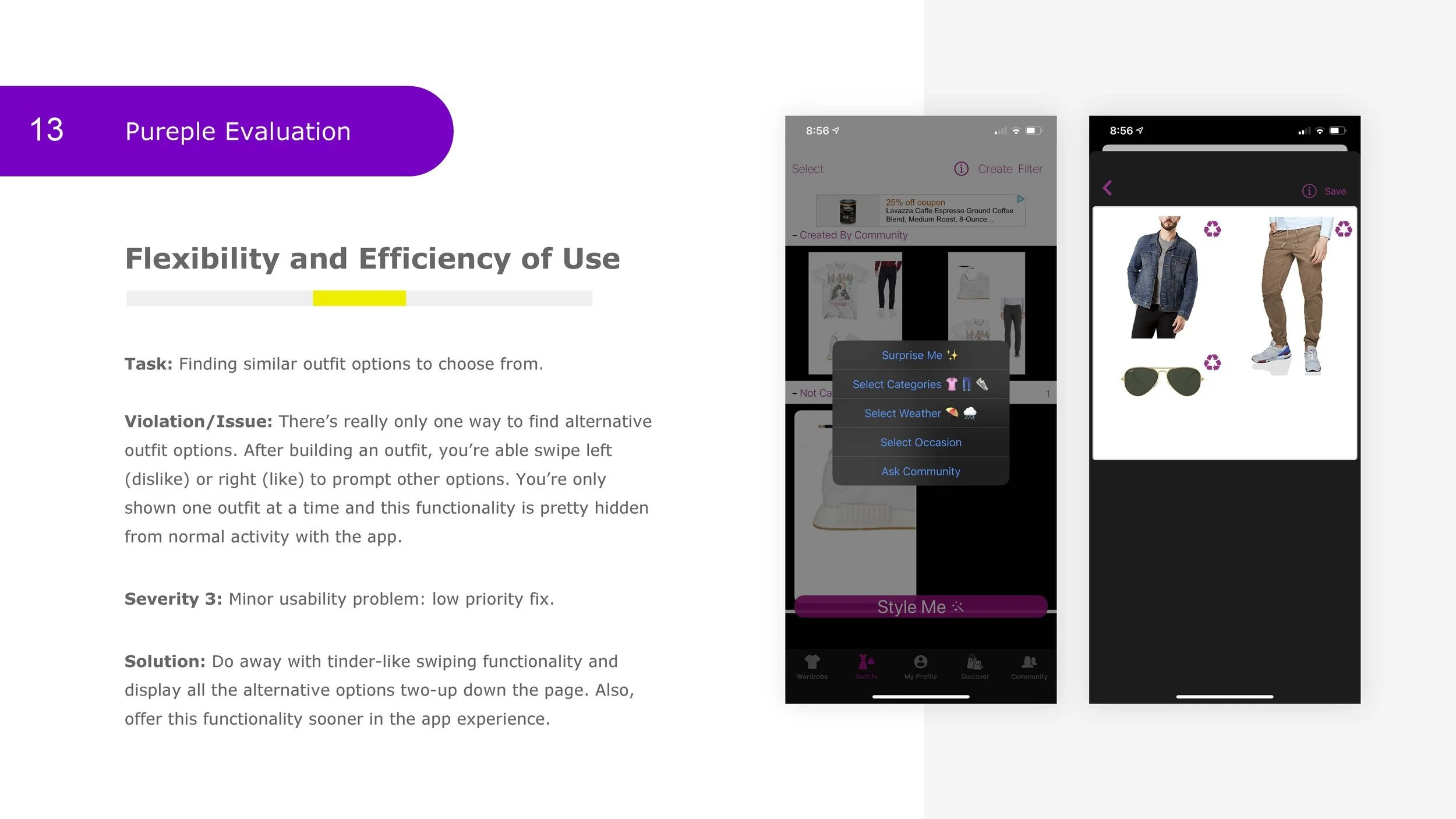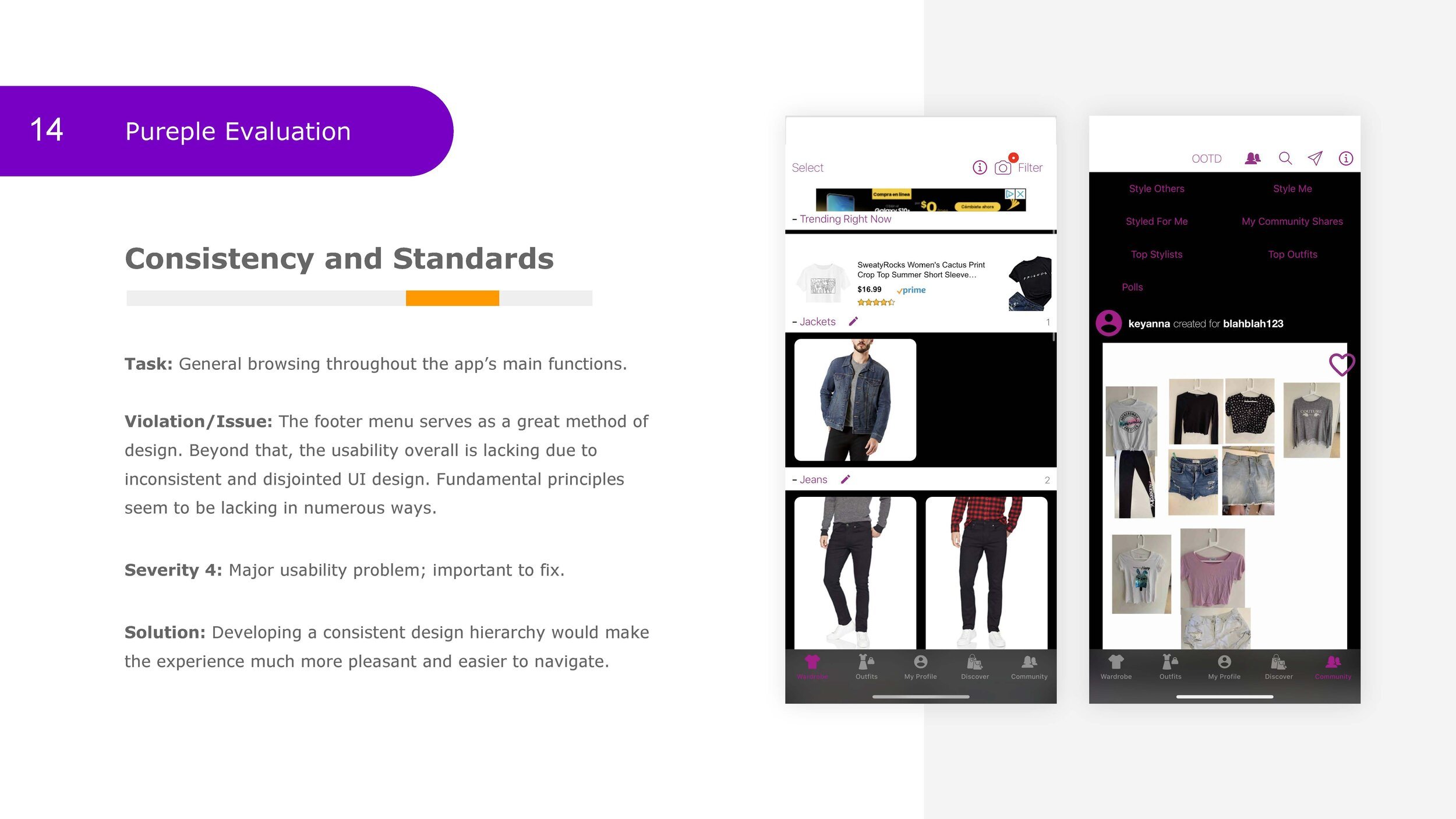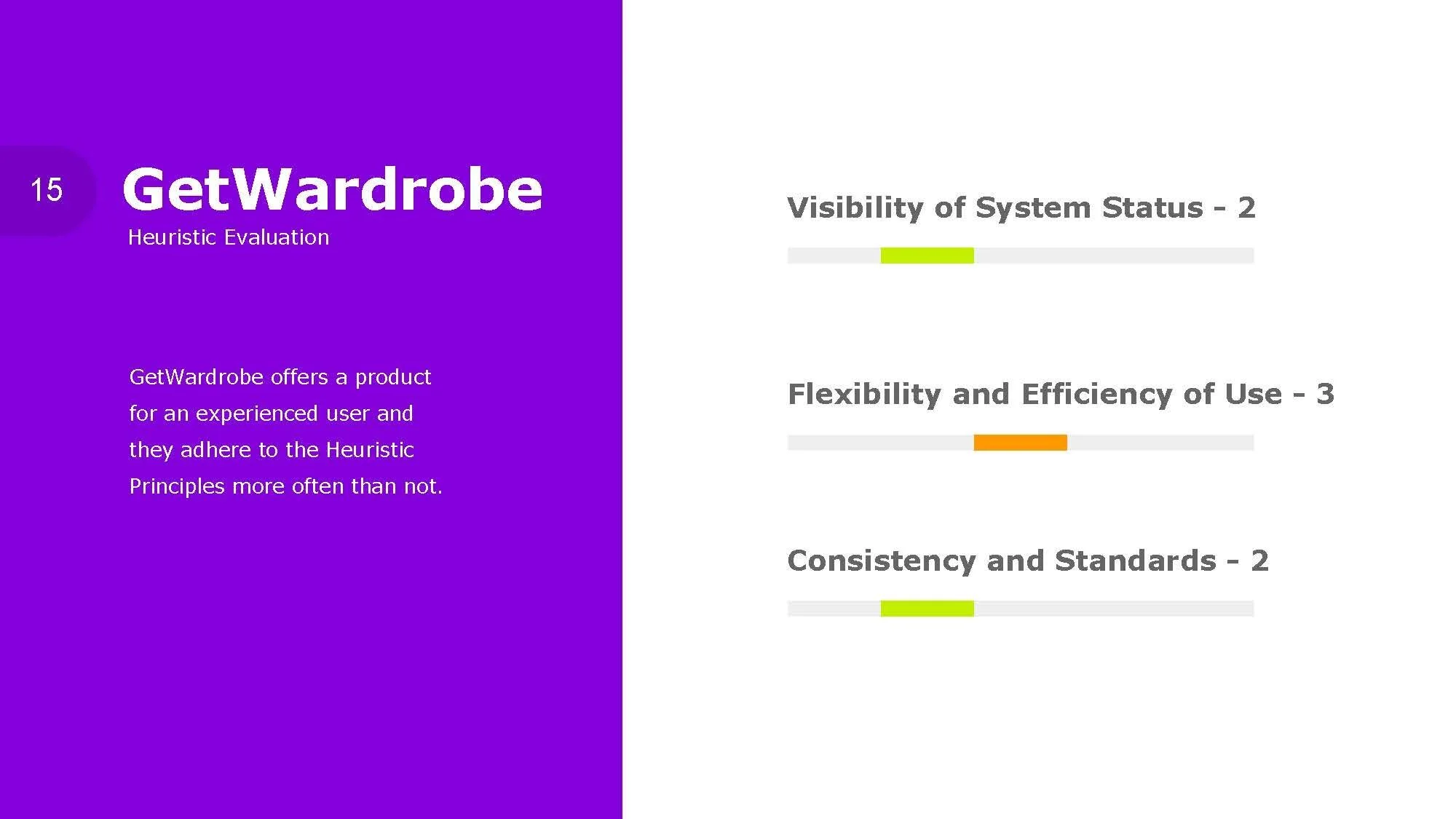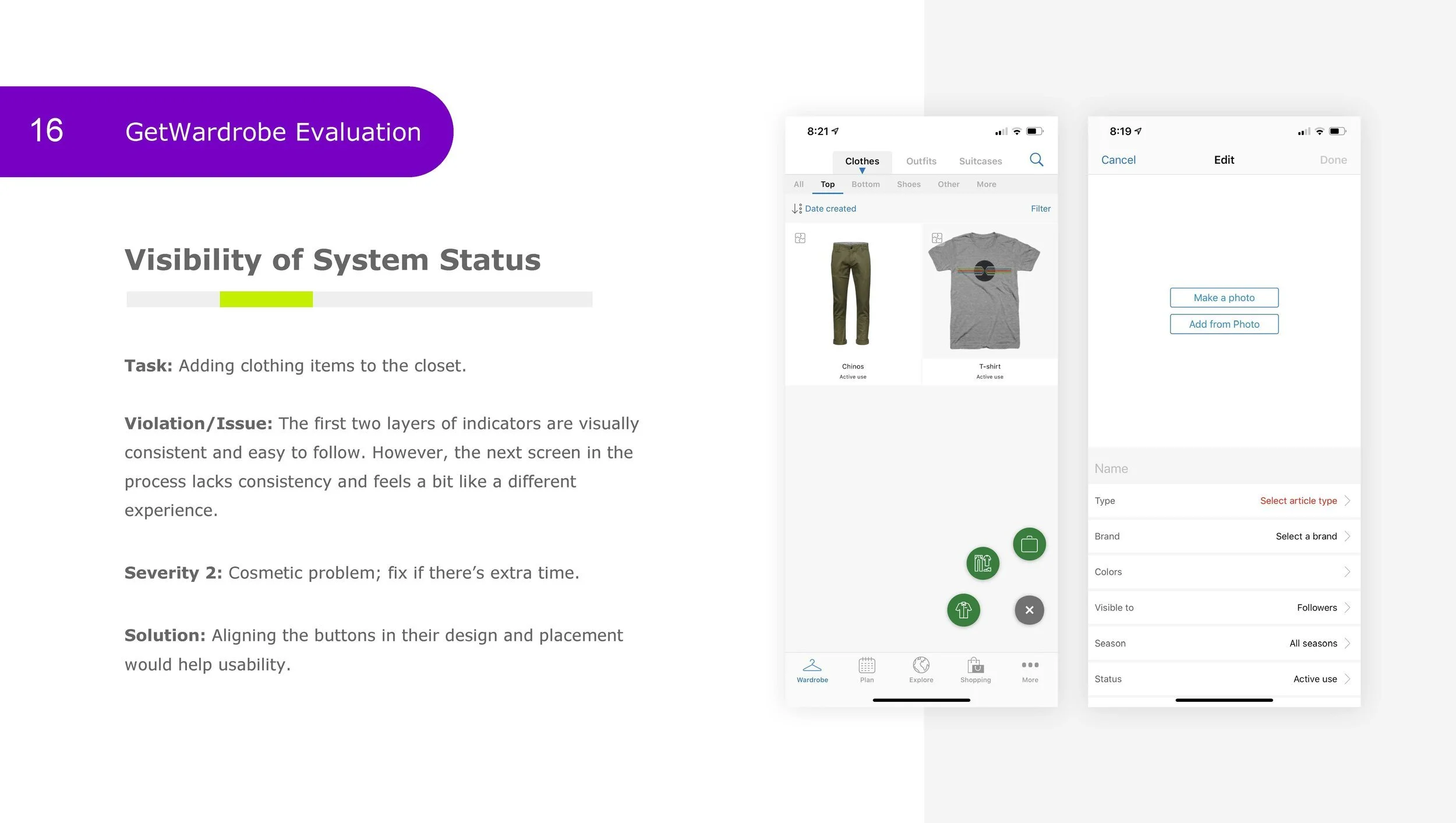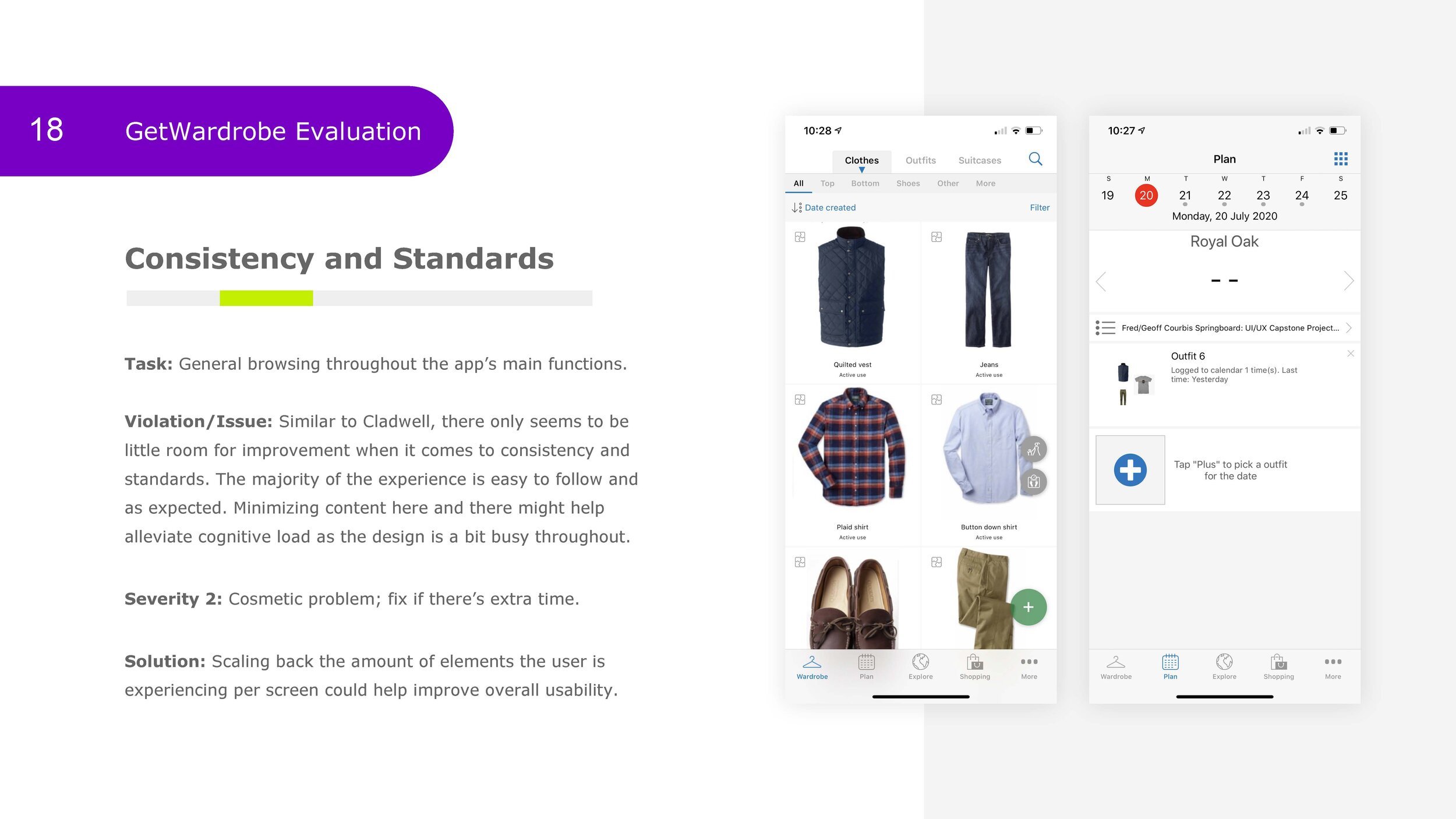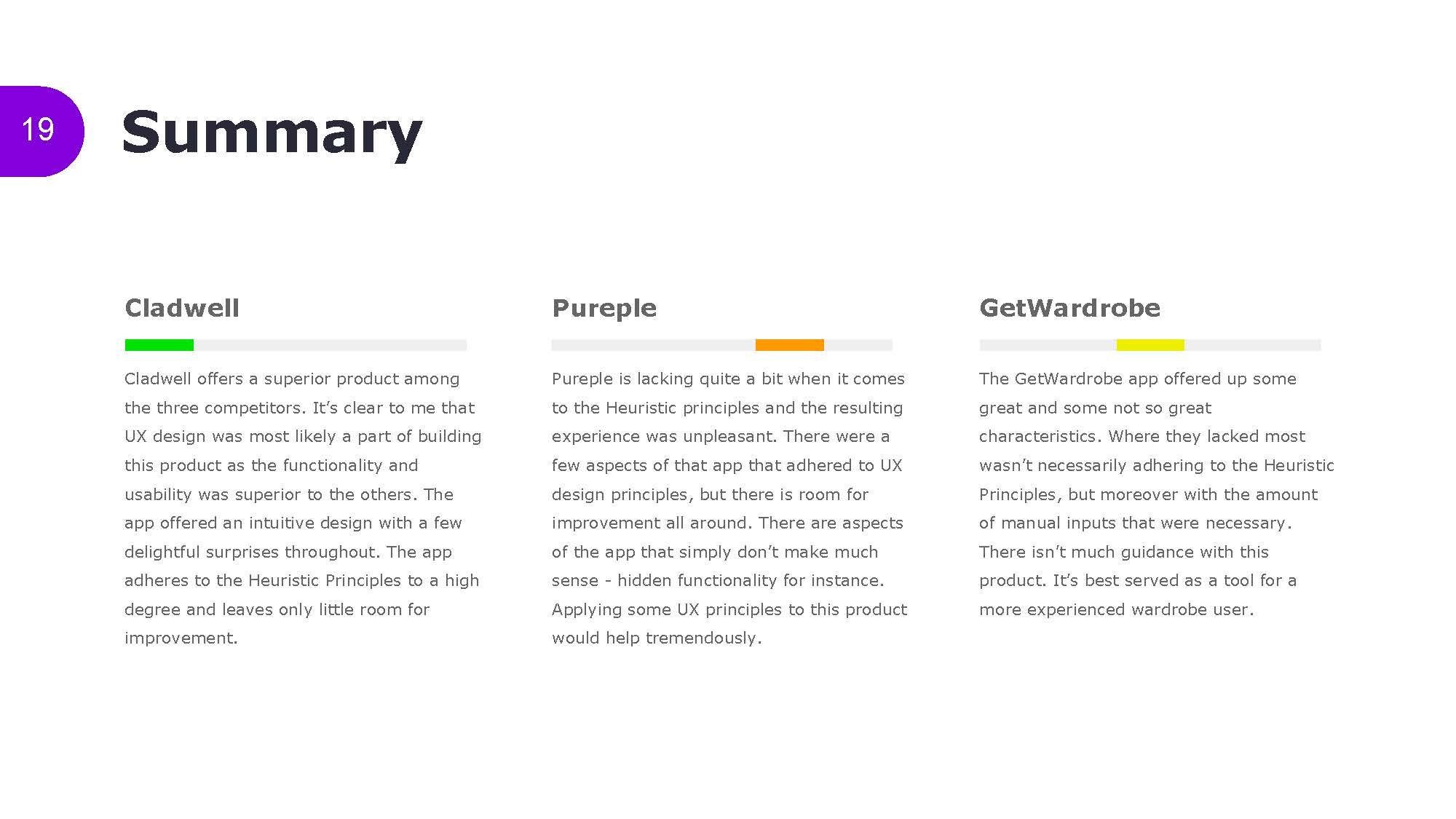Case Study
Empathize
Setting bias aside and learning all about my user, the competition and opportunities.
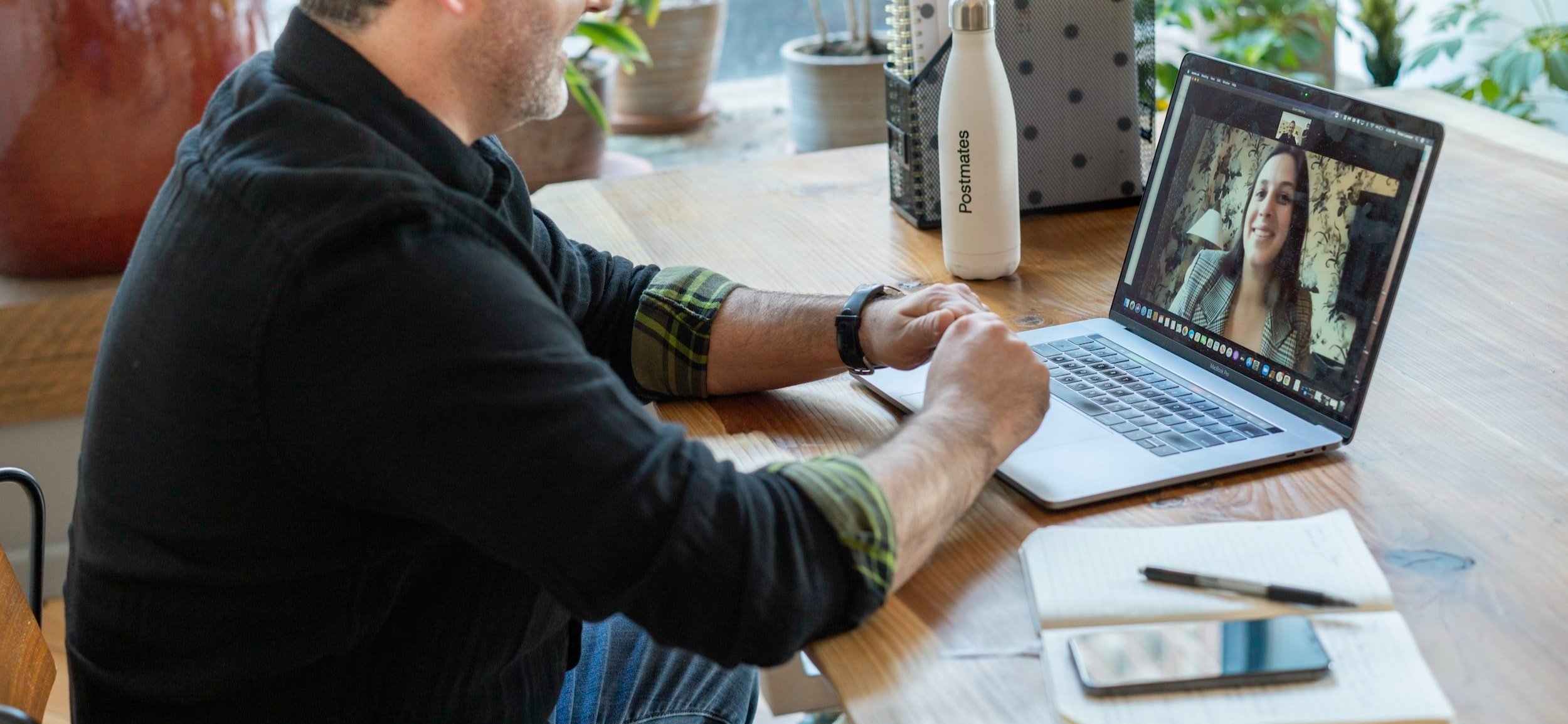
Tasks
01 User Interviews
02 Synthesis & Affinity Mapping
03 Online Research
04 Insights
05 Competitive Research & Analysis
06 Empathy Mapping
07 User Personas
01
User Interviews
After screening about 25 people, I narrowed down the list and conducted structured interviews with five unique participants. The findings from these interviews will serve as the foundation of my qualitative data throughout this assignment.
What are the most frustrating problems when it comes to a wardrobe?
What are the most common behaviors with a wardrobe?
What influences their wardrobe choices?
Do people understand the potential personal and professional implications of their wardrobe?
Do people have a systematic approach?
Script Sample: Click to view
02
Synthesis & Affinity Mapping
As my interview information began to take shape through the affinity mapping process, I found that my users’ have similar wants and needs to varying degrees. The most significant and common themes are shown below.
03
Online Research
In addition to user interviews, I conducted an extension search for secondary information by scouring through the internet – fashion articles, industry blogs, reports on psychology and clothing. Below are the three most significant findings from this research and a relative bit of advice from one of our nation’s founders.
Psychology of Clothing
The perception of vanity tends to overshadow the psychological benefits.
Common Challenges
Lack of knowledge. Understanding some simple principles and guidelines can help unlock problem solving potential.
Practical Solutions
Simplifying wardrobe options to include more interchangeable and versatile items. Documenting your wardrobe. Minimalist or capsule wardrobe solutions.
“For every minute spent organizing, an hour is earned.”
“Perhaps our closets are the best illustration of this sentiment — a closet bursting with clothes translates to time wasted digging through piles and putting outfits together on Sunday nights. The opposite then must be true: a streamlined closet filled with wardrobe essentials saves precious time.”
Benjamin Franklin
04
Insights
Below are the critical insights that I discovered throughout my research. These user insights will provide guide rails for all my decision making moving forward.
People recognize the psychological benefits from having an organized and well planned wardrobe, but they lack the expertise and time to achieve this.
People make a lot of sacrificial decisions because of their feelings and challenges.
People tend not to think of their wardrobe holistically.
General lack of knowledge or guidance becomes detrimental.
There’s a general lack of pre-planning and an abundance of instinctive decision-making
05
Competitive Research & Analysis
I executed a Heuristic Evaluation Report on three major competitors. At their worst, the competition didn’t follow Heuristic Principles at all resulting in frustration and difficulties. My findings listed here helped to uncover improvement opportunities for my design.
Ensure heuristic principles are being implemented.
KISS. Follow logic, especially in the organization of content.
Ensure more than one way to accomplish a task.
Aesthetic qualities are significant and translate to trust, confidence and delight.
Teach the user about the experience. Explain the functionality.
06
Empathy Mapping
Through the empathy mapping process, it was clear that the users’ needs and wants overlapped quite a bit. However, I found that we could separate the users into two groups based on their level of aptitude:
A. Experienced
B. Novice
07
User Personas
Guided by the Empathy Map results, I developed two different users personas to best represent the needs of each user group. Experienced users would be represented by Social Sami and novice users by Efficient Eddie.
A. Experienced
B. Novice



